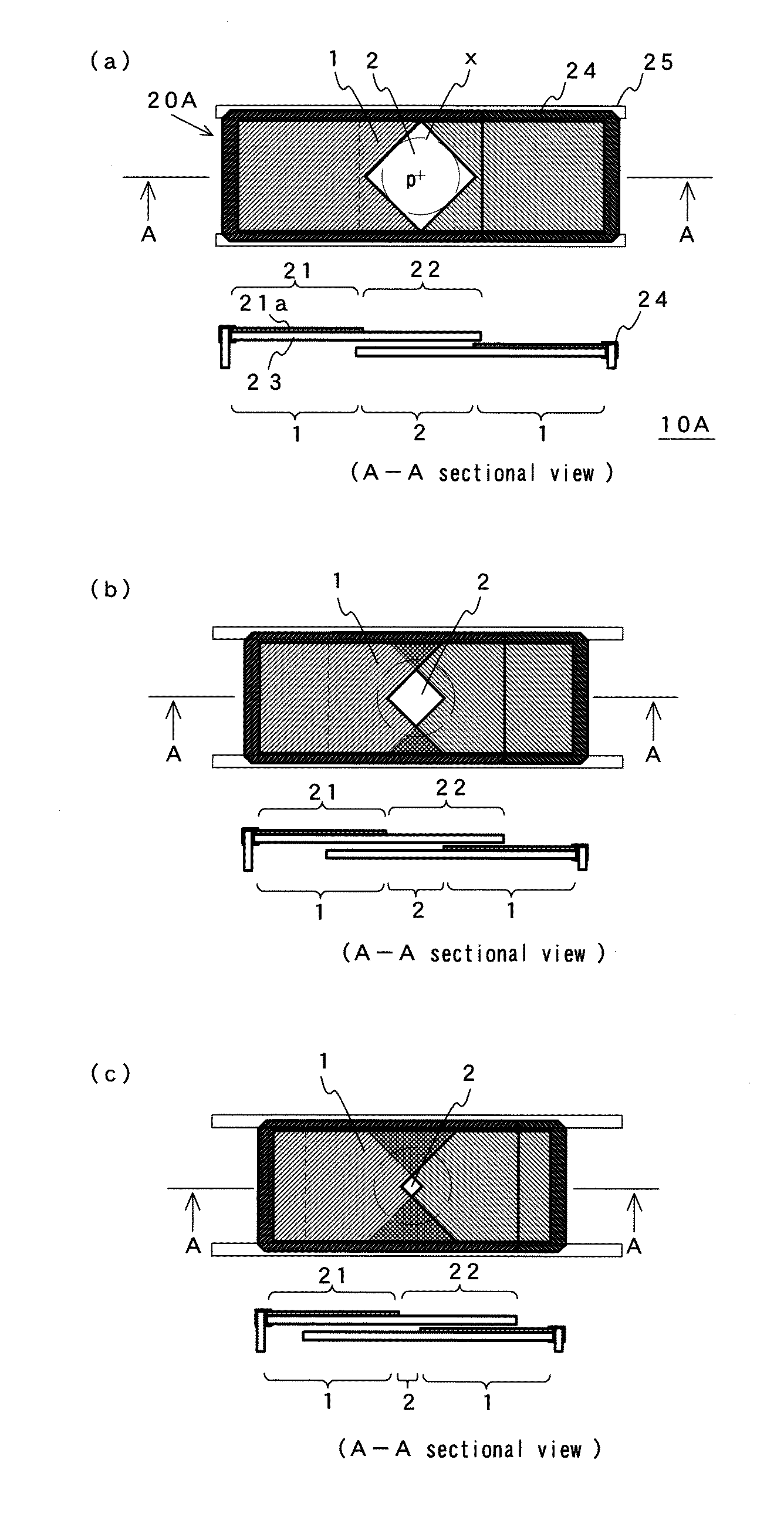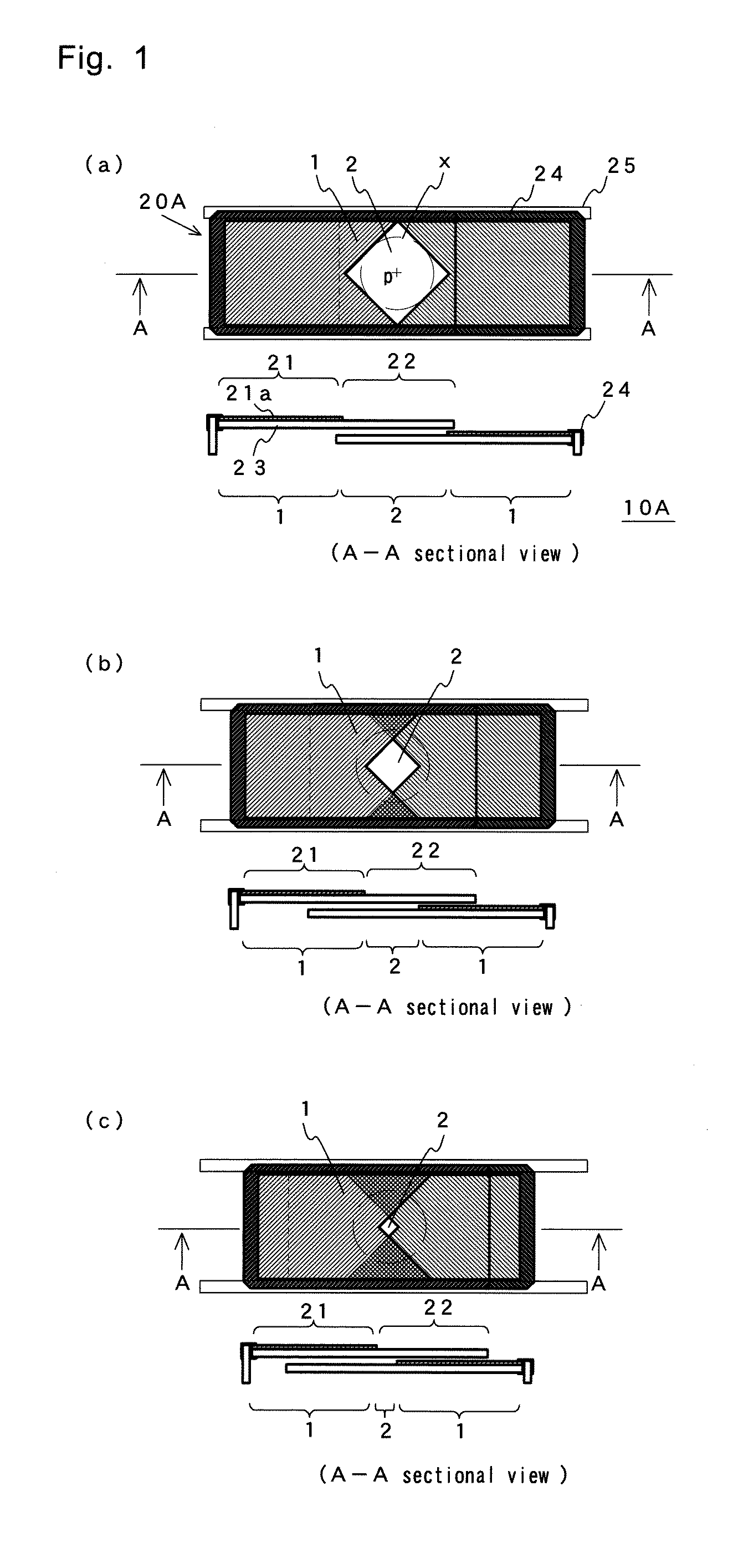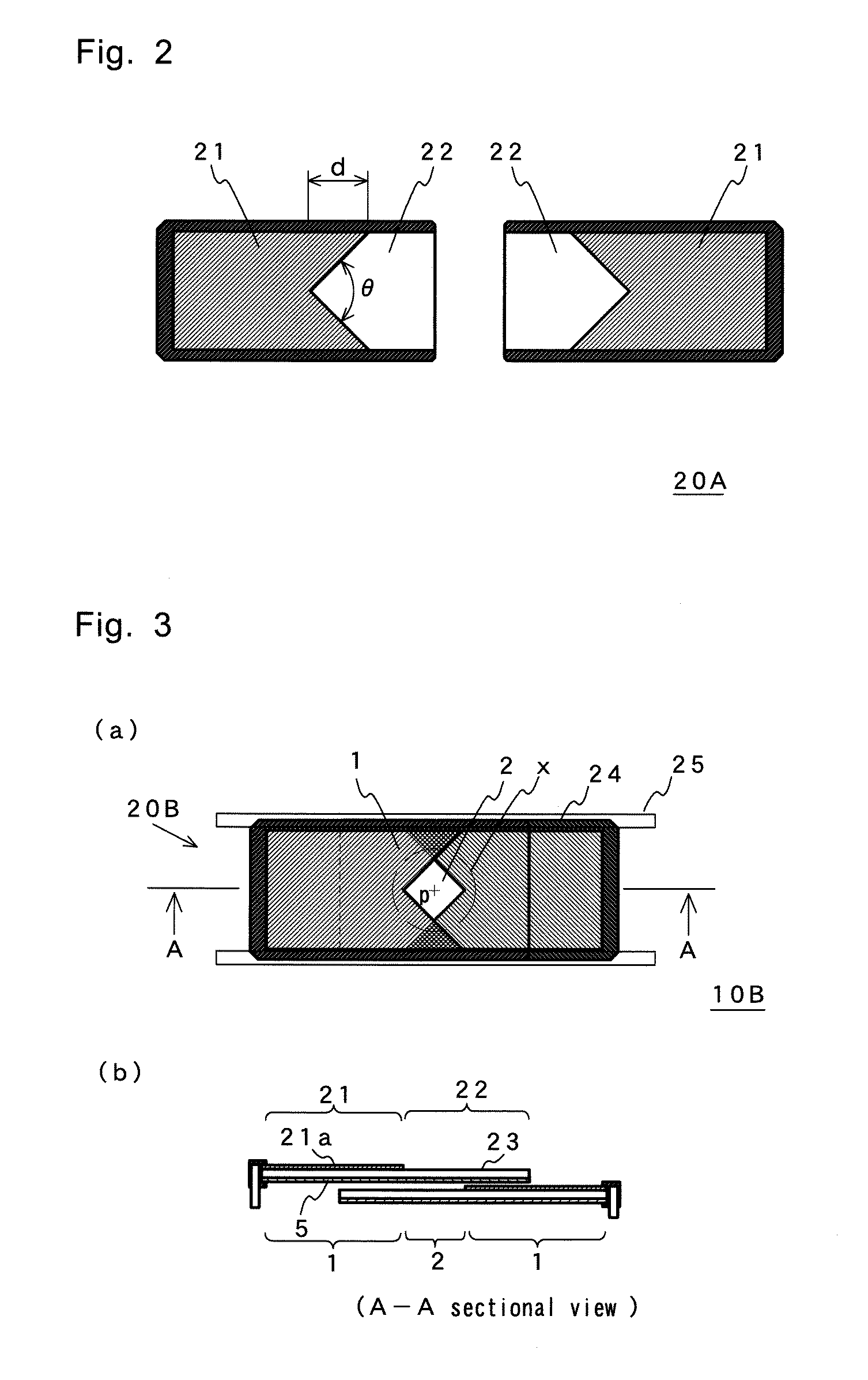Aperture stop
- Summary
- Abstract
- Description
- Claims
- Application Information
AI Technical Summary
Benefits of technology
Problems solved by technology
Method used
Image
Examples
Embodiment Construction
[0033]Hereinafter, the present invention will be described in detail with reference to the drawings. Note that in the drawings, the same reference numerals refer to the same or like elements.
[0034]FIG. 1 is a diagram illustrating a two-blade type aperture stop 10A, which is an aperture stop according to an embodiment of the present invention. FIG. 2 is a plan view showing a pair of stop blade members 20A of the two-blade type aperture stop 10A.
[0035]The stop blade member 20A includes a filter portion 21 on which a filter layer 21a is formed and a non-filter portion 22 that is an area on which the filter layer 21a is not formed. The filter portion 21 and the non-filter portion 22 are provided respectively at the left half and right half of the surface of a rectangular flat-plate substrate 23. The stop blade member 20A is fitted into an outer frame 24. Herein, the filter layer 21a has a V-shaped reentrant portion on the side of the non-filter portion 22. The filter layer 21a transmits...
PUM
 Login to View More
Login to View More Abstract
Description
Claims
Application Information
 Login to View More
Login to View More - R&D
- Intellectual Property
- Life Sciences
- Materials
- Tech Scout
- Unparalleled Data Quality
- Higher Quality Content
- 60% Fewer Hallucinations
Browse by: Latest US Patents, China's latest patents, Technical Efficacy Thesaurus, Application Domain, Technology Topic, Popular Technical Reports.
© 2025 PatSnap. All rights reserved.Legal|Privacy policy|Modern Slavery Act Transparency Statement|Sitemap|About US| Contact US: help@patsnap.com



